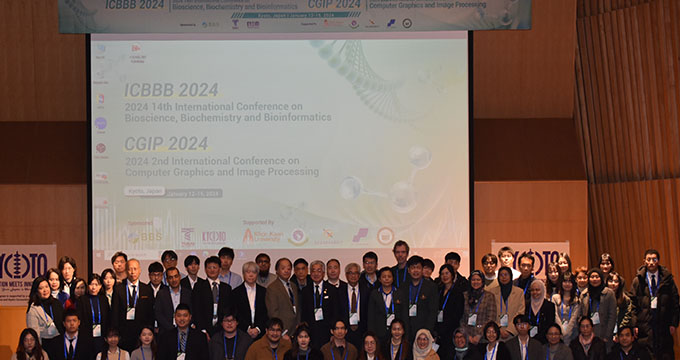

62 views||Release time: Dec 16, 2024
After the conference, take the time to go through your notes, materials, and the business cards you collected. Organizing your thoughts will help you decide who and what to follow up on.

Key Takeaways:
Identify the most important insights or discussions that occurred during the conference. This could include new research trends, methodologies, or potential collaborations.
Sort Contacts:
Review the business cards, emails, and LinkedIn profiles of people you met. Group your contacts into categories such as potential collaborators, mentors, or industry experts.
One of the most effective ways to follow up is by sending a personalized email. This shows that you value the connection and are interested in continuing the conversation.
Timing:
Send your follow-up emails within 2–3 days of the conference to keep the connection fresh in the recipient’s mind.
Subject Line:
Make your subject line clear and specific, e.g., "Great to Meet You at [Conference Name] – Follow-up."
Structure of the Email:
Example:
Subject: Great to Meet You at [Conference Name] – Follow-up
Dear [Name],
It was a pleasure meeting you at [Conference Name] last week. I really enjoyed our conversation about [specific research topic or paper]. Your work on [specific detail] was particularly inspiring, and I would love to explore possible collaboration opportunities.
As mentioned, I’ve attached a link to my recent paper on [related topic], and I would appreciate your feedback.
I look forward to staying in touch and hope we can discuss our research in more detail soon.
Best regards,
[Your Name]
Networking at conferences isn’t limited to email. Connecting on professional social media platforms like LinkedIn is a great way to stay in touch with peers, professors, and industry professionals.
Send Connection Requests:
After the conference, send LinkedIn connection requests to people you met. Include a personalized message, reminding them where you met and the topics you discussed.
Engage with Their Content:
Once you’re connected, engage with their posts and updates by commenting or liking their content. This keeps the relationship warm and establishes you as an active and interested member of the academic community.
If you came across useful resources during the conference, such as papers, tools, or contacts, share them with relevant people. This demonstrates value and fosters goodwill.
Send a Useful Paper or Article:
If a conversation sparked a new idea or direction in your research, send relevant papers or resources that you think might be of interest. This reinforces the value of your connection.
Share Your Own Work:
If you presented a paper, offer a link to your published work or any materials from your presentation (slides, poster). This keeps the conversation going and helps establish your presence in the field.
If you discussed potential collaborations, job opportunities, or other professional leads, be proactive about following up.
Schedule a Meeting:
If you agreed to have a more in-depth conversation or meeting, set up a time for a phone or video call. Use tools like Calendly or Doodle to make scheduling easy.
Discuss Collaboration:
If you talked about collaborating on a paper or research project, follow up with specific ideas or steps to take the project forward. Suggest a timeline, next steps, or resources you can share.
Express Gratitude for Opportunities:
If someone mentioned an opportunity such as a position, funding source, or project, express your gratitude and ask for further details or guidance.
It’s important to track your professional connections and maintain regular contact. Set reminders or use tools like CRM systems (e.g., HubSpot) or Google Calendar to follow up periodically with your contacts.
Check-in Periodically:
Every few months, send a brief email to touch base. You can update your contacts on your recent research, ask for updates on their work, or share relevant resources.
Offer Help or Collaboration:
If you see opportunities where you can support your contacts (e.g., reviewing a paper, sharing resources, or providing a connection), don’t hesitate to offer help. This strengthens the relationship and opens doors for future collaboration.
Many conferences offer post-conference webinars, online discussion groups, or follow-up events. These are great opportunities to continue the conversation, meet new people, and stay updated on future conference plans.
Join Online Forums:
Participate in any online communities (e.g., Slack groups, LinkedIn groups) related to the conference. Engage in discussions and share insights from the conference.
Attend Post-Conference Webinars:
Many conferences host post-event webinars or virtual meetups. Attend these to keep the momentum going and continue networking with other participants.
Effective post-conference follow-up is crucial for maintaining and strengthening the relationships you’ve built. By following up with personalized emails, connecting on LinkedIn, sharing resources, and staying proactive about potential collaborations, you can turn your conference experiences into long-term academic and professional benefits.
Stay connected with leading academic conferences, workshops, and networking events by visiting iconf.com. Discover upcoming events in your field, connect with researchers, and continue your academic journey.
Join iconf.com today and expand your network!